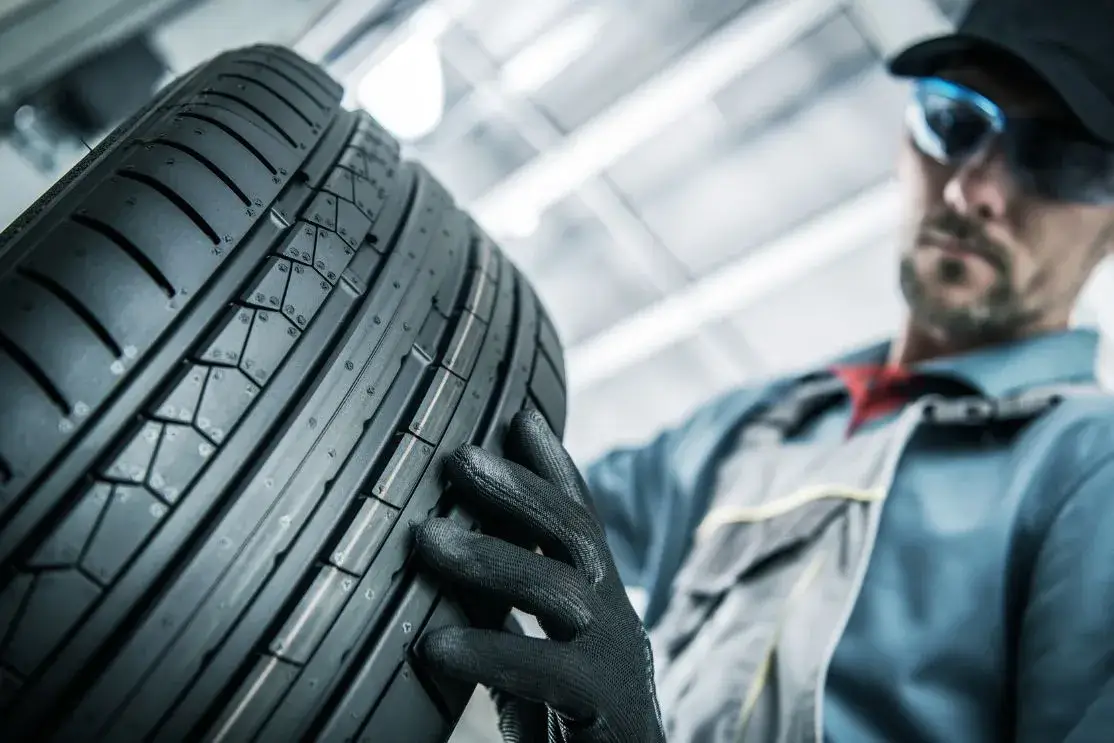How To Properly Care For Your Car’s Tyres In Australia
Automotive tyre care is crucial to maintaining a safe and reliable driving experience. In Australia, particularly in Victoria, the Road Safety Road Rules 2017 dictate specific tyre usage guidelines, including tread patterns and tyre condition rules. This article will provide comprehensive information on properly caring for automotive tyres while driving in the Australian environment, adhering to the mentioned regulations.
Key topics discussed will include air pressure maintenance, regular alignment checks, and appropriate tyre rotation schedules. Additionally, this article will address various other general guidelines to ensure the tyres’ long-term reliability and performance.
By adhering to these principles, drivers can experience enhanced traction, improved fuel efficiency, and increased safety while navigating Australia’s diverse terrain.
Vehicle Standards and Road Rules for Tyres and Wheels in Victoria
- The Vehicle Standard (Australian Design Rule 95/00 – Installation of Tyres) 2018 specifies requirements for installing pneumatic tyres in vehicles.
- The standard applies to all categories of vehicles from 1 July 2019 for new model vehicles. It does not apply to temporary-use spare units.
- The standard also defines terms such as “tyre”, “tyre load rating”, “tyre speed category symbol”, and “tyre size designation”.
- The Road Safety Road Rules 2017 set out the general road rules for driving in Victoria, including rules for using tyres and wheels.
- The rules state that a driver must not drive a vehicle with a tyre with a tread pattern that is not clearly visible or a tyre that is damaged or worn to the extent that it may affect the vehicle’s safety.
- The rules also state that a driver must not drive a vehicle that has a wheel or rim that is cracked, distorted or broken or that has been repaired by welding.
- The penalty for driving with defective tyres or wheels is a fine of $330 and 3 demerit points.
- Tyres should have adequate tread depth to ensure good grip and braking performance. The minimum legal tread depth in Australia is 1.6 mm.
- Tyres should also be checked regularly for wear, damage or misalignment. Tyres showing wear on one side or feathered edges may indicate a need for wheel alignment or suspension adjustment.
Importance of Air Pressure Maintenance
Proper tyre care is crucial for the safety and performance of any vehicle. The most important part of tyre maintenance is regularly monitoring inflation levels, as under-inflated or over-inflated tyres can cause wear on treads and even lead to blowouts. To ensure optimal tyre pressure, owners should invest in a reliable air pressure gauge that measures accurately within 1 PSI increments.
In addition to monitoring air pressure, wheel balancing should be considered when caring for your car’s tyres. During initial installation and at regular intervals after that, it is advisable to have the wheels balanced by an automotive technician; this will help prevent uneven tread wear, which could result in the premature replacement of the tyres.
Users should also rotate their tyres every 5,000 miles (8,000 kilometres) to maximise their service life.
The key takeaway here is that careful attention must be paid to both inflation levels and wheel balance if you want your car’s tyres to remain in good condition throughout its lifespan.
Regular inspections are highly recommended to identify minor problems before they develop into serious issues.
Alignment Checks
Precise alignment is crucial for vehicle safety and tyre durability. Wheel and tyre balancing are essential aspects of appropriate car care that should be considered when evaluating tyre conditions in Australia.
The following factors must be considered when examining a vehicle’s wheel alignment:
- Caster Angle – This angle establishes whether the steering axis is perpendicular to the road surface. If so, the caster angle is set correctly.
- Camber Angle – This shows the extent to which wheels tilt from vertical while driving straight ahead; they should always remain parallel.
- Toe-In/Toe-Out – These terms describe the direction in which tyres point concerning one another; they should aim straight ahead instead of outward or inward, as this can lead to instability and poor fuel economy.
These angles influence ride comfort, handling, braking response, stability, and tyre wear. To ensure these aspects stay consistent over time, routine alignment checks are vital for maintaining peak performance and tread longevity on Australian roads.
Following a regular inspection schedule and addressing alignment issues as they emerge, drivers can extend tyre life and guarantee a safer, more efficient driving experience.
Tyre Selection and Replacement
Choosing the right tyres for your vehicle is crucial for optimal performance, safety, and fuel efficiency. When selecting new tyres, it is important to consider factors such as load-carrying capacity, speed rating, and compatibility with your vehicle’s specifications. Consulting the owner’s manual or seeking advice from a professional tyre retailer can help you make the best choice for your specific needs.
Regular tyre replacement is necessary to maintain safety and performance. Tyres should be replaced when they reach the minimum legal tread depth of 1.6 mm, exhibit signs of excessive wear or damage, or are aged beyond their recommended lifespan. Rotating tyres regularly can help ensure even wear and extend their overall life.
Tyre Rotation
Tyre rotation involves changing the position of each tyre and wheel on a vehicle to maximise tyre life and performance. The recommended frequency for tyre rotation may vary between every 5,000 to 10,000 kilometres, depending on the type of tyre.
Different types of tyres are available for various vehicles, such as all-season, performance, winter, and all-terrain tyres. Understanding the kind of suitable tyre for your vehicle and adhering to the recommended tyre rotation frequency is crucial to ensure optimal tyre performance and longevity.
Rotation Frequency
Tyre rotation is an essential aspect of car maintenance in Australia as it helps protect tyres from wear and tear and optimises their performance. The correct frequency of rotation is crucial for each vehicle type.
To maintain safety on the road and ensure even tread wear across all four tyres, it is recommended to perform wheel balancing and tyre balancing every 10,000 kilometres or six months. Rotating tyres while switching between winter and summer sets is also advisable.
Regular tyre inspections aid in identifying unevenly worn areas caused by improper wheel balance or alignment, which can lead to excessive vibrations while driving and premature tyre wear.
Hence, adhering to the manufacturer’s recommendations for proper tyre care is crucial to ensure a safer ride with maximum efficiency.
tyre Types
Regarding tyre rotation, it’s crucial to understand the types of tyres available and how they perform in various weather conditions. Generally, tyres are available in conventional or radial designs, each with advantages and disadvantages depending on an individual’s driving needs.
Moreover, several leading tyre brands offer specialised all-weather models that withstand extreme cold to scorching hot summer days. To determine the ideal tyre type for your vehicle, consider critical factors such as load capacity, ride comfort, and resistance to wear caused by varying road surfaces and weather conditions.
Ultimately, familiarity with various tyre types will enable you to select the appropriate setup for your requirements.
Tyre Age
Tyre age is a crucial aspect to consider when caring for your car’s tyres in Australia. Regular inspections are necessary since tyres on the vehicle for too long can be hazardous and lead to decreased performance or even failure. Relying upon any tyre older than six years is recommended immediately, regardless of the remaining tread life.
During your regular tyre inspections, you must also check for signs of cracking or other damage caused by aging. Such damages reduce the tyre structure’s integrity and weaken it over time, which raises the risk of blowouts and other driving problems. Hot weather conditions in Australia can accelerate this process, making frequent tyre checks crucial.
To prevent premature aging of your car’s tyres, ensure they are adequately inflated with the correct air pressure according to the manufacturer’s specifications.
Additionally, utilise protective measures such as wheel covers or parking in shaded areas whenever possible to reduce exposure to damaging UV rays from sunlight.
Tyre Wear
Tyre wear is essential in properly caring for your car’s tyres. Various factors, such as incorrect tyre pressure, inadequate wheel balance or alignment, and general overuse, can cause wear. Regular checks must be conducted to ensure optimal performance from your tyres.
Wheel balance should be checked every 10-15,000km for optimum driving comfort and tyre life. Uneven weight distribution on the wheels can cause them to vibrate excessively when in motion and reduce traction control, resulting in decreased stability and increased wear.
To check for correct wheel balance, pull off the road at a safe location and inspect the tread wear pattern across each tyre. An uneven spread of wear may indicate a problem with balancing which requires immediate attention from a qualified technician.
The tread depth on all four tyres should also be measured regularly using a tread depth gauge to ensure they comply with legal requirements. The minimum allowable depth varies depending on state laws but usually lies between 1mm-1.6mm; if any of your tyres fall below this level, a replacement will be necessary for optimal handling ability and safety assurance.
Additional Tyre Care Tips
Tyre care is an integral part of car maintenance in Australia as it affects the roadworthiness and safety of a vehicle. Regular tyre inspection, balancing, and replacement are essential to ensure proper performance, longevity, and fuel efficiency.
To maximise the life expectancy of tyres, it is recommended that they be balanced every 6 months or 10-12 thousand kilometres to maintain uniform tread wear. Moreover, wheel alignment should be checked regularly to prevent misalignment caused by potholes or other external factors.
Once a year or every 20 thousand kilometres, whichever comes first, all four tyres should be inspected for signs of damage, such as cracking along sidewalls or bulges due to internal deterioration from age or lack of inflation.
Tyre pressure must be monitored monthly with a quality gauge for optimal performance and extended tyre life.
Finally, old tyres need to be replaced if the tread depth falls below 1.6mm (2/32″), as worn-out tyres can cause hydroplaning on wet roads which may lead to dangerous situations while driving.
Conclusion
Tyre care is essential for the safety and performance of any car. To ensure safe driving conditions, it is important to check tyre pressure, alignment, age, wear, and rotate tyres regularly. The best practice is to perform these checks every three months or 6,000 miles.
Taking proper care of your car’s tyres will lead to a safer and smoother ride for you and extend your vehicle’s life. Inspecting tyre tread depth can help identify potential hazards from worn tyres before it’s too late. With proper maintenance and attention to detail, drivers can enjoy their cars longer without worrying about costly repairs associated with neglecting tyre care needs.
Frequently Asked Questions
Q: How should I properly care for my car’s tyres?
A: Proper care and maintenance of your car tyres are essential for your safety and the longevity of your tyres. Regularly check your tyres for any issues, maintain proper tyre pressure, rotate your tyres, and keep an eye on the tread depth.
Q: How often should I check my tyres?
A: You should check your tyres at least once a month. However, if you notice any issues, such as damage or uneven wear, you should immediately suspend them.
Q: What should I look for when checking my tyres?
A: When checking your tyres, inspect the tread depth, look for any bulges or gouges on the sidewalls, and ensure the tyres show no signs of uneven wear. It’s also important to check the tyre pressure.
Q: What is tyre pressure, and why is it important?
A: tyre pressure refers to the amount of air in your tyres. Maintaining the proper tyre pressure is crucial to ensure maximum performance and safety. Incorrect tyre pressure can lead to uneven wear, reduce fuel efficiency, and even compromise your ability to steer and brake.
Q: How often should I rotate my tyres?
A: Experts recommend rotating your tyres every 6,000 to 8,000 miles, or roughly every 6 months. This helps to ensure even wear on all tyres and extends the life of your tyres.
Q: What is tread depth, and why is it important?
A: Tread depth refers to the depth of the grooves in your tyres. Tread depth is essential for performance and safety, as it affects traction and grip on the road. It’s vital to ensure that the tread doesn’t reach the “wear bars” on the tyre and that they meet the minimum legal requirement of 1.5mm.
Q: What can cause uneven wear on my tyres?
A: Uneven wear on tyres can be caused by a number of issues, including incorrect tyre pressure, misaligned wheels, worn or damaged suspension parts, and even the way you drive. This is why inspecting your tyres and addressing any issues promptly and regularly is important.
Q: Do I need to replace all of my tyres simultaneously?
A: It’s generally recommended that you replace all four of your tyres at the same time, as they will have worn at roughly the same rate. However, if only one or two tyres are damaged or worn, you can replace just those tyres.
Q: How long do car tyres typically last?
A: The lifespan of your tyres depends on various factors, including the type of tyre, how often you drive, and how well you care for them. On average, car tyres can last anywhere from 25,000 to 50,000 miles.
Q: How can I extend the life of my tyres?
A: To extend the life of your tyres, you should regularly rotate them, maintain proper tyre pressure, and ensure they’re correctly aligned. You should also avoid driving with heavy loads or at high speeds and avoid sudden stops or starts.






